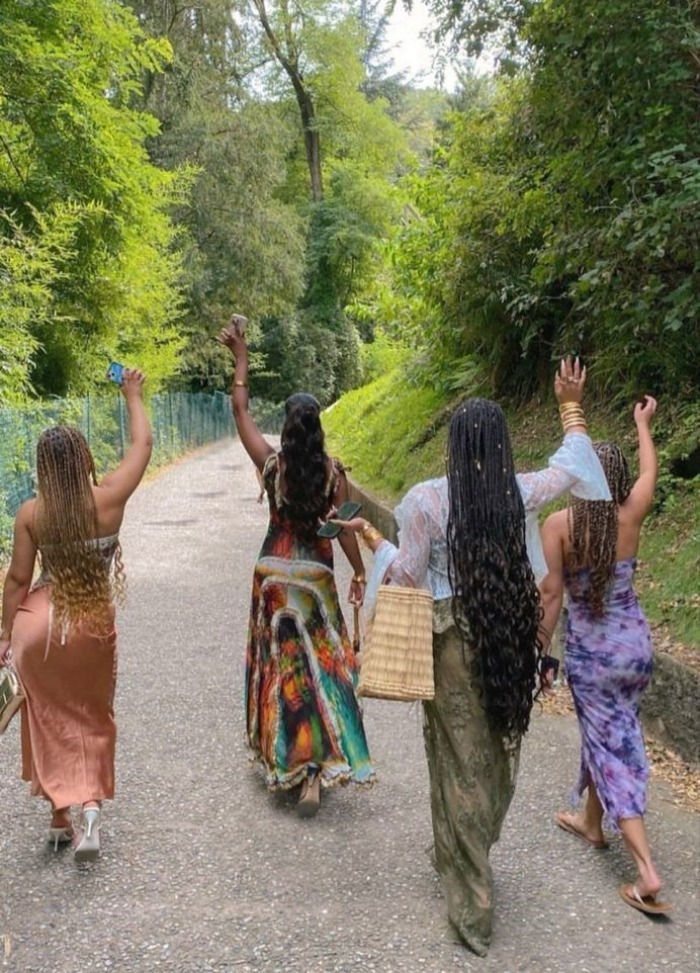Why the 'All Girls' Stereotype Needs to End
- Nya'lay Amoah
- Jan 27, 2024
- 3 min read
Since the release of the Barbie movie in the summer of 2023, a new trend that has been born on TikTok is the girlhood trend. The girlhood trend has seen girls of all ages take the time to appreciate their femininity and the works of empowering female icons.
The trend can involve creators on the app sharing clips from their personal lives that represented ‘girlhood’ for them. Such as getting ready to go out with friends or the impulsive act of cutting your hair to create bangs, to name a few random examples. This trend has also seen an increase of editors creating short videos and slideshows to show the experience of ‘girlhood’ through aesthetic images and videos often found on Pinterest. And these videos are great, a lot of girls and women are finally able to find a place online to talk about how they enjoy being girls and embracing femininity and in the past, these spaces weren’t necessarily available for girls.
In fact, growing up, a lot of us girls found that they had to let go of the activities or skills that they particularly enjoyed out of fear of being bullied for having ‘girly’ interests such as liking the colour pink or girly music which the girlhood trend does a great job of celebrating. The girlhood trend allows girls to feel comfortable enjoying ‘stereotypically’ feminine things without shame which is a contrast to how girl interests can often be ridiculed in the media.
But that being said, the girlhood trend, particularly the videos created by editors, often tend to embrace one side of femininity or girlhood. Majority of these videos usually only contain images and videos of white women. And on the rare occasion that these videos have diversity, it will usually be one picture of a woman of colour (WOC) slipped in at the last second.
Now, it is important to note that there are few accounts that have dedicated their entire page to only include images of WOC as they find that they don’t find representation of themselves in other editors' pages. And oftentimes, you will find comments on these editors' videos asking the creators why they don’t include white women in these videos but these commenters often seem to forget that these pages that have videos containing only women of colour are created as the alternative pages have no women of colour.
Often time, when these creators are asked why they don’t include women of colour in their videos, they’ll often say that they ‘just didn’t think to include women of colour in these videos’, ‘they didn’t do it intentionally’ or even ‘that they aren’t able to relate to the videos if it includes woman of colour’.
Which is very interesting as oftentimes black and brown girls are forced to be able to relate to female content even if the content isn’t catered to them. For example, when these videos talk about hair struggles ‘all’ women go through and the content of the video only focuses on women with straight hair or type 1 hair, how are black women with type 3 & type 4 hair supposed to relate to the struggle that apparently all women can relate to. But if someone were to make a video about hair struggles ‘all girls’ relate to but only include images of black and brown girls with type 3 and type 4 hair, many people would be quick to state that not all girls can relate to this content.
It almost seems like white women want to be included in every space but don’t want to include women of colour in their spaces.
It is so disappointing to find a video supposedly for women and see all the images or the content of the video be only relatable to white women. As a black girl myself, it’s heart-breaking to feel that I am not viewed as a woman. I am an afterthought for femininity and girlhood and the woman experiences because of the colour of my skin.
This is a clear case of lack of representation but instead of struggling to see black girls on the TV screen and in the movies, now we’re struggling to see black girls on our apps. Even using popular apps like Pinterest, I am sure many of us black girls can relate to having to add the adjective “black” to the back of a search just to see someone who looks like you. Searching up aesthetics on Pinterest like the ‘clean girl aesthetic’ and on first search your page is flooded with white women until you add ‘clean girl aesthetic black girls’ and finally being able to see representation.
This isn’t a complaint about there being too many white girls in these girlhood videos, this is a complaint about how there are not enough black and brown girls included in these girlhood videos and supposedly ‘all girls can relate to’ videos. As black girls, we shouldn’t have to add black to the end of a search so that we are included in conversations about girls and womanhood and femininity.

Printed by Joan




Comments